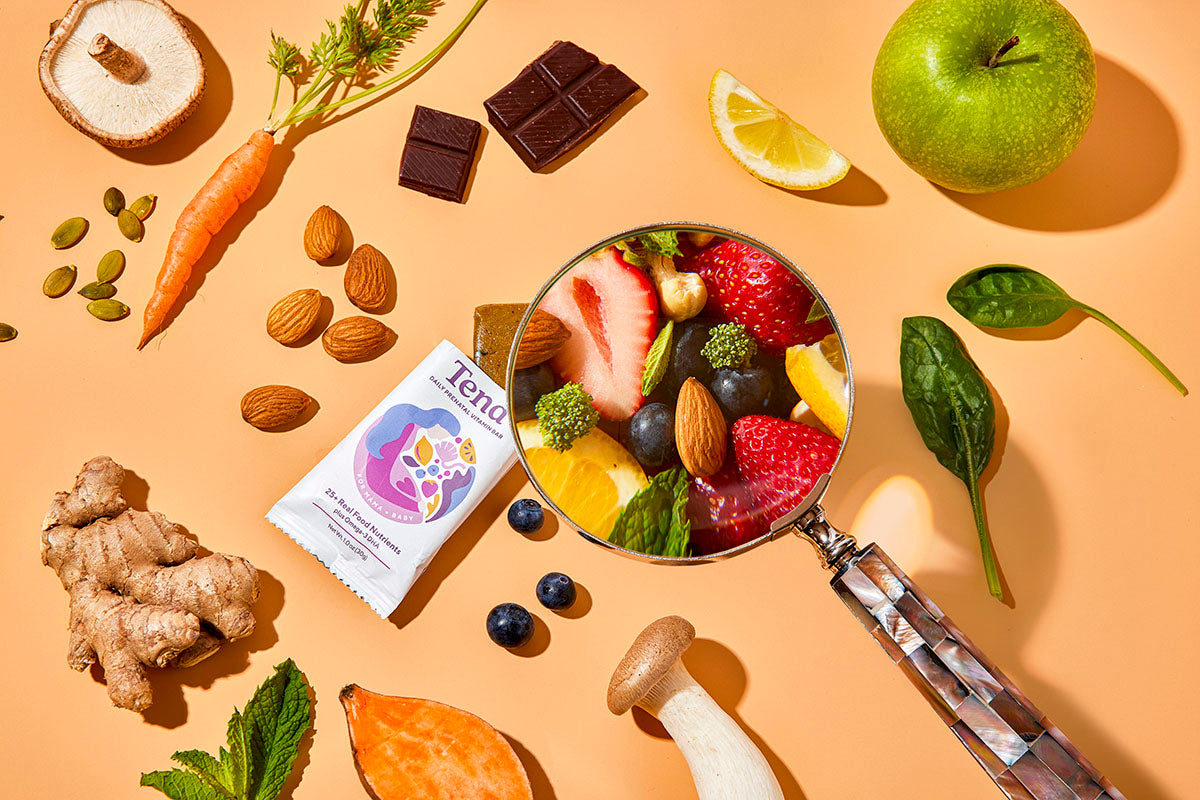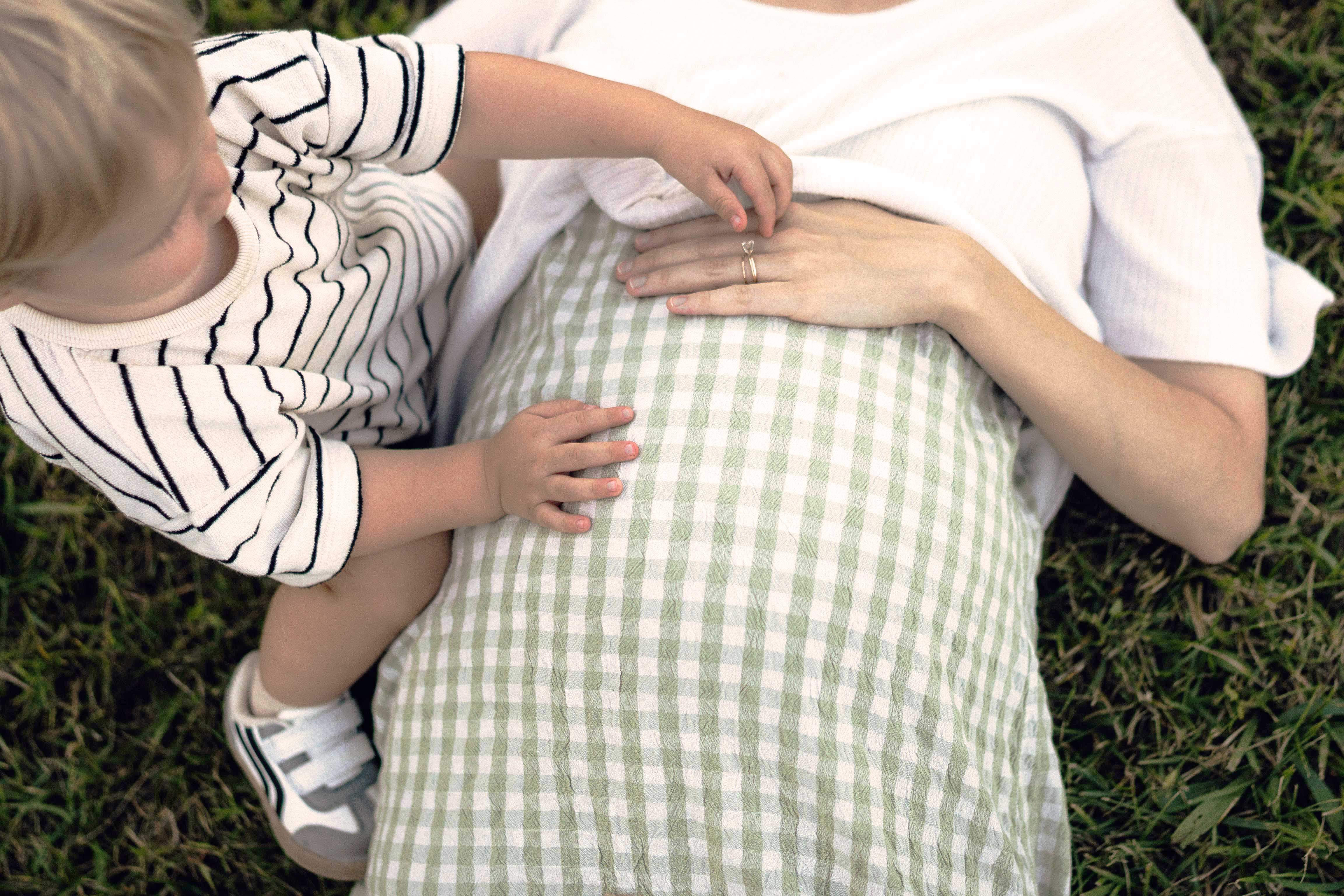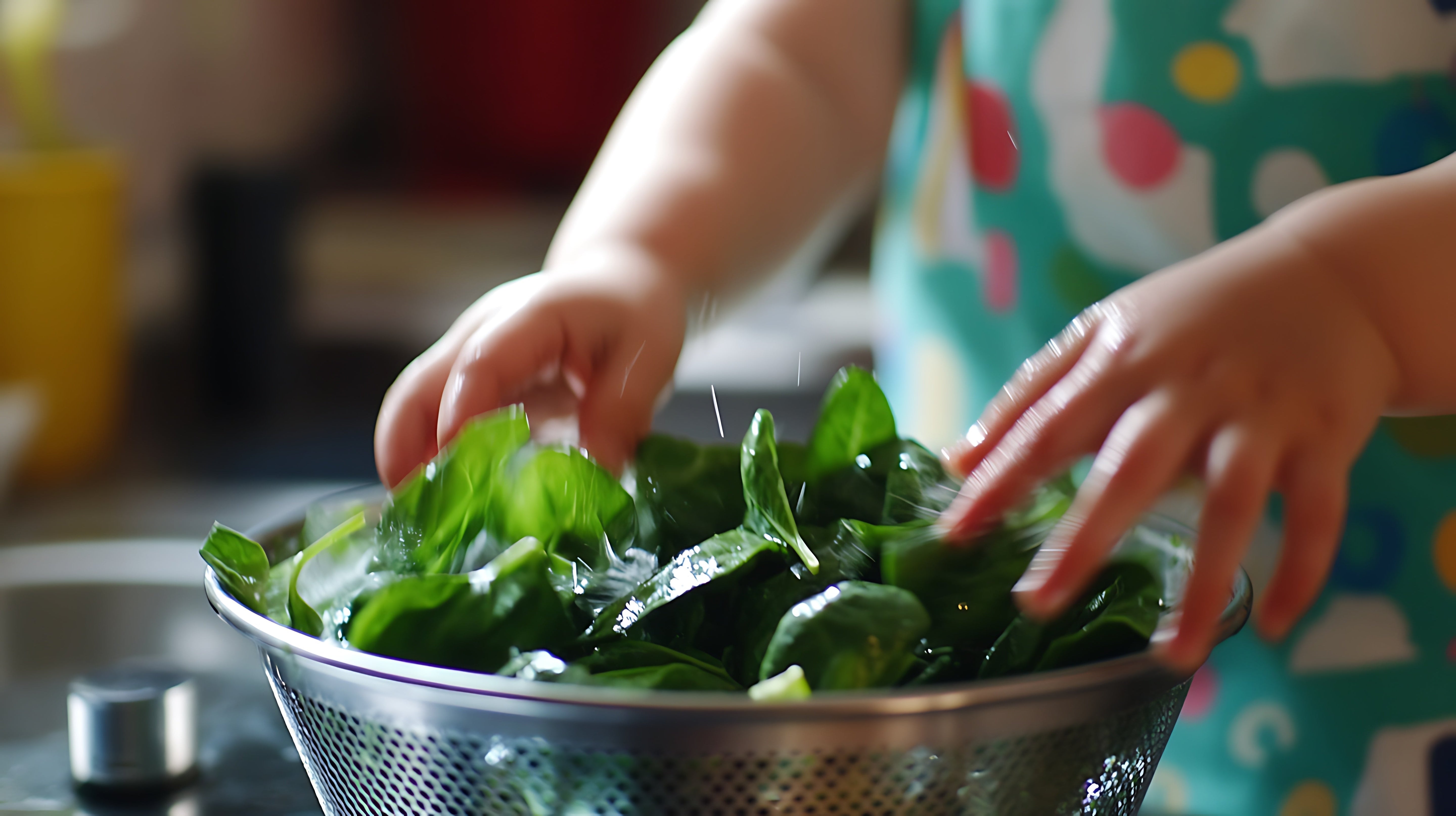How to get your top nutrients from real food
The best foods to eat for an optimal pregnancy & postpartum
How can you eat to maximize your nutrition during pregnancy, or to prepare for pregnancy? It doesn’t take a PhD to know: foods beat pills every time. Nutrients from foods are better absorbed and recognized by your body, and once they reach your cells, they’re also more potent.
Here’s how to eat your way to a vitamin-packed pregnancy.

FOLATE or Vitamin B9
Folate is critical. In early pregnancy, it reduces the risk of neural tube defects. But it does more: folate can reduce the risk of anemia, preterm birth, and pregnancy-complicating infections.
The Food and Drug Administration launched a program in 1998 to add folic acid (synthetic folate) to a wide range of foods like breads, cereals, and pasta. However, about 50% of women are “slow processors” of this synthetic folic acid compared to folate’s active, natural form (L-methylfolate).
Folate found in plants, such as cruciferous vegetables and leafy greens, is already in its natural L-methylfolate form. Another reason that foods are better than synthetic nutrients!
Here’s what 100% DV of folate can look like from whole foods that are vegetarian and vegan-friendly. For pregnancy, aim for 600 mcg/DFE (Dietary Folate Equivalents) – if you’re postpartum/nursing, you’ll need 500 mcg/DFE.
- ½ cup spinach, boiled/steamed = 131mcg or 22% DV
- ½ cup wakame seaweed = 196 mcg, 33% DV
- 1 cup sliced avocado = 120mcg, 20% DV
- 1 cup shredded romaine lettuce = 64mcg, 11%
- 4 spears asparagus = 89mcg, 15%
OR, one Tend bar = 600mcg, 100%
Other high folate foods include lentils, garbanzo beans, black-eyed peas, and if you consume animal products, organic beef liver.
 CHOLINE
CHOLINE
Did you know that getting enough choline during pregnancy can improve your child’s *lifelong* memory, learning, and attention? That means choline can influence neurological outcomes years later. Similarly to folate, choline can also decrease risk for neural tube defects, cleft lip, and cleft palate.
Yet, 90% of child-bearing age women are deficient in choline.
And it’s no surprise: food-form choline is best. Recent studies have shown that synthetic choline supplements, and choline bitartrate in particular, can cause production of a metabolic byproduct called TMAO.
TMAO promotes blood clotting and plaque formation, and may increase the risk of gestational diabetes and preeclampsia. We recommend taking every measure to minimize these risk factors in pregnancy, which means taking a pass on choline bitartrate-containing vitamins altogether.
So where to go instead? Aside from animal protein, you can get vegetarian-friendly choline from eggs (especially the yolk), legumes, quinoa, broccoli, peanuts, and sunflower seeds.
Here’s an example of what 100% DV of choline can look like for a vegetarian and flexitarian diet – aim to get 450 mg of choline/day if pregnant, and 550 mg if lactating/nursing.
Choline for a vegetarian diet:
- 2 hardboiled eggs = 294 mg
- ½ cup kidney beans = 45 mg
- 1 cup cooked quinoa = 43 mg
- 1 cup yogurt = 38 mg
- ½ cup broccoli = 31 mg
ADD one Tend bar for 110 mg choline from sunflower seeds.
Choline for a flexitarian diet:
- 2 hardboiled eggs = 294 mg
- 3 oz chicken breast, roasted = 72 mg
- 3 oz cooked cod = 71 mg
- 1 red potato = 57 mg
Learn more about synthetic choline and the little known risks it can pose here.

IRON
During pregnancy, your blood supply expands almost 50% to deliver vital oxygen and nutrients to your growing baby. With 20% of women iron-deficient at the time of pregnancy, and up to 40% iron-deficient in the third trimester, the importance of iron supplementation cannot be overstated!
Iron is notoriously difficult to absorb, so make sure to have your iron together with vitamin C. Plants contain non-heme iron and meat, seafood and poultry contain both heme and nonheme iron. The richest source of heme iron are lean meat and seafood.
Here are some iron-rich foods from both heme and non-heme sources:
- 1 cup white beans = 8 mg, 44% DV
- ½ cup lentils = 3 mg, 17%
- ½ cup firm tofu = 3 mg, 17%
- 3 oz oysters, cooked = 8 mg, 44%
- ½ cup stewed tomatoes = 2 mg, 11%
Tend provides gentle plant-based iron along with naturally-occuring vitamin C, shown to greatly enhance iron bioavailability. We offer 13mg of iron from plant sources including kale, and Vitamin C from citrus and apples for optimal absorption.
 VITAMIN D
VITAMIN D
In addition to supporting bone health, recent studies have shown that vitamin D at 4000IU reduces the risk of preeclampsia, gestational diabetes, preterm birth, and low birth weight. Even in the sunniest locales, nearly 50% of women are deficient in Vitamin D.
We source Vitamin D3 from microalgae. Few foods naturally contain vitamin D, but fatty fish (such as trout, salmon, tuna, and mackerel) is an excellent source, while eggs and cheese also contain D3. Many dairy products are fortified with vitamin D.
Here are some food sources to get vitamin D, along with a fun way to boost your vitamin D intake!
- 3 oz sockeye salmon, 570 IU
- ½ cup mushrooms exposed to UV light, 366 IU
- 1 TB cod liver oil, 1360 IU
- Fortified dairy or nondairy milks, 100-144 IU
- 2 eggs, scrambled, 88 IU
 OMEGA-3 DHA
OMEGA-3 DHA
Omega-3 DHA is a critical building block for your baby’s brain, eyes, and overall cognitive development. It continues to be essential during lactation, contributing to the first two years of baby’s brain development postpartum.
There is no established % DV for Omega-3 DHA, but we follow the evidence-backed daily level recommended by the American College of Obstetrics and Gynecology and the American Pregnancy Association, 300 mg of DHA, which one Tend bar contains.
We found the cleanest and most sustainable source of Omega-3 DHA in the world, from micro-algae, without the heavy metal exposure found in fish-sourced Omega-3 and without relying on marine fishing. No more fishy burps here!
Here’s what 300 mg of DHA can look like from a whole food diet that incorporates seafood:
- 3 oz wild atlantic salmon = 1220 mg
- 3 oz sardines = 740 mg
- 3 oz oysters = 230 mg
- 3 oz cod = 100 mg
It’s very difficult to get DHA from vegetarian/vegan sources, unless you go straight to the source, which is micro-algae, the bottom of the food chain.
Again, one serving of Tend contains the 300mg DHA omega-3 recommended by the American College of Obstetrics and Gynecology. And again, no fish burps!
 CALCIUM
CALCIUM
Did you know calcium is the most abundant mineral in the body? Almost 98% of calcium in the body is stored in the bones.
However, this critical mineral is missing from most prenatal vitamins due to its sheer size being difficult to deliver in smaller pill and gummy formats. Unfortunately, 20% of US women are deficient in calcium, which has been shown to reduce the risk of preterm labor and pregnancy-induced hypertension (PIH).
If you’re pregnant or lactating, aim to get 1000 mg of calcium daily.
Dairy products are a rich source of calcium, but non-dairy sources such as salmon, and vegetables such as kale, broccoli, and bok choy contain calcium too.
Here’s a list of foods with calcium to incorporate into your diet:
- 8 oz yogurt = 415 mg, 32% DV
- 1.5 oz mozzarella cheese = 333 mg, 26%
- 1 cup fortified milk (such as soymilk) = 299 mg, 23%
- ½ cup firm tofu = 253 mg, 19%
- ½ cup boiled spinach = 123 mg, 9%
- 1 TB chia seeds = 76 mg, 6%
Tend provides 30% daily value of calcium, more than most prenatals, which are devoid of calcium altogether.
All prenatal vitamins take their inspiration from foods, in an attempt to recreate molecules in the lab that mimic those found in fresh fruits and vegetables.
But it’s intuitive: real nutrition can’t be packed into a pill, and healthy foods can’t be replaced with synthetic supplements.
At Tend, our mission is to nourish from the best real food nutrients, helping moms and babies to feel healthy, strong, and empowered in their nutrition and lifestyle choices.
📝 Studies cited:
FASEB J. 2018 Apr;32(4):2172-2180.
Am J Clin Nutr. 2017 Dec; 106(Suppl 6): 1647S–1654S
Cochrane Database Syst Rev. 2010 Aug 4:(8):CD001059.




